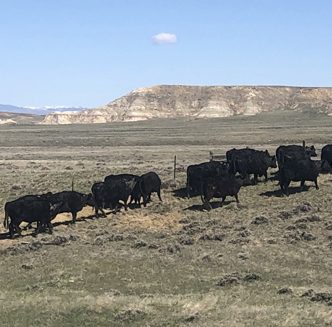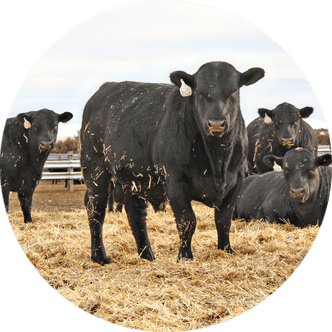What’s the big fuss about banning seed oils?
A spotlight has recently been placed on the U.S. food system, as part of an executive order to address a list of factors claimed to negatively impact public health. One emphasis is placed on seed oil, with activists and critics insisting such oils contribute to inflammation and other major health concerns.
In some circles, seed oils have been described as “poisonous.”
There is a movement to replace seed oils with other dietary fats like butter, lard, beef tallow, olive oil or palm oil.
A ban or restrictions placed on seed oils could negatively impact U.S. agriculture and increase consumer food costs.
Replacing seed oils with other dietary fats could vastly impact the demand of valuable U.S. row crops.
Agricultural organizations have begun assessing the possible financial consequences, considering what might happen economically if seed oils were prohibited for use in food products.
The Arkansas Farm Bureau (ARFB) is one of those organizations, with a white paper published in April titled, “The Critical Role of Seed Oils in U.S. Agriculture.” The report focuses on soybeans, corn and cotton – key row crops in Arkansas.
Brandy Carroll, assistant director of Commodity Activities and Market Information at ARFB said, “While we are not experts on nutrition, we did feel we could address the economic impact of those markets.”
Other contributing authors of the white paper are John McMinn and Tyler Oxner, both directors of commodity activities and economics for ARFB.
The value of seed oils
Critics have categorized seed oils as “the hateful eight.” The list includes soybean, canola, corn, cottonseed, grapeseed, sunflower, safflower and rice bran oils.
These oils are not only used for cooking but also as ingredients in a multitude of grocery items.
Seed oils can be found in anything from mayonnaise and salad dressings to crackers, cereal and cake mixes. They are even ingredients in roasted almonds and coffee creamers.
McMinn said, “The biggest takeaway I have from writing the white paper is how much of the market share seed oils have in cooking oils, specifically soybean oil. If you see a bottle of vegetable oil, it is more than likely soybean oil.”
He underscored soybean oil makes up 60 percent of the market share for U.S. food oils. Other commodities do not come close to this market share, with oils like canola at 16 percent, corn at five percent, cottonseed at three percent and animal fats at four percent.
Row crop commodities like soybeans are not the final product.
When crushed, soybean oil is used for food or biofuel production. The remaining meal is marketed as animal feed.
Between the oil and the meal, McMinn said soybean oil is the price driver – and the most valuable in food use. In the U.S., 50 percent of the soybean crop is crushed domestically, which provides jobs and adds value to the U.S. economy.
A ban or restrictions on seed oils means they would have to be replaced with something. There is a push to replace them with animal fats like butter, lard or beef tallow or substitutes like olive, peanut or palm oil.
Flavor profile changes
If manufacturers are forced to change ingredients, it will likely change the flavor profile of food products and could come with a hidden price tag.
“We literally do not produce enough animal fat, and we cannot force an animal to a certain extent to produce more fat to make up for it,” McMinn said. “We would have to import oils, and this would also increase cost on the consumer level.”
It is estimated consumers would pay an additional 42.8 percent per year to compensate for the potential loss of seed oils in food production, according to an economic analysis by the World Agricultural Economic and Environmental Services (WAEES), funded by the United Soybean Board (USB) and published on March 27.
On the farmer level, a seed oil ban would inevitably impact demand of U.S. grown row crops, with a ripple of indirect impacts.
“The biggest consuming group of soybean oil is consumers. If this market representation is gone, then the demand to grow soybeans would be gone too,” McMinn said.
Consider the widespread impact on employment across the agricultural supply chain, spanning seed and chemical corporations to cooperatives and processing plants, along with the communities depending on this economic activity. Furthermore, additional agricultural sectors could experience the effects of these changes.
“The amount of soybean meal we produce could decrease due to a seed oil ban, because if this oil market is not there, then why would we crush the soybeans to begin with? You could potentially look at having less product out there to put into animal feed,” McMinn explained.
Seed oil health debate
Analyses like the WAEES report and the ARFB white paper are in response to criticism of seed oils for food use.
Concerns have been raised by the U.S. Department of Health and Human Services (HHS), along with a host of health influencers taking to social media to blame seed oils as a cause of major health conditions.
Further debate was sparked after President Donald Trump signed Executive Order 14212 on Feb. 13 to establish the Make America Healthy Again (MAHA) Commission, chaired by Robert F. Kennedy, Jr., secretary of HHS.
The MAHA Commission was given 100 days to provide an assessment of what the White House calls “America’s escalating health crisis, with an initial focus on childhood chronic diseases.”
Within 180 days of the order, the commission is to present a strategy based on the assessment findings.
On May 22, the MAHA assessment was published. One of many issues addressed in the report is assertions regarding seed oils that contradict years of health studies which promote seed oils as superior alternatives compared to saturated fats.
Research has consistently shown polysaturated fats help lower the risk of cardiovascular disease and support other body functions and animal fats and tropical fats, like coconut oil, are higher in saturated fats and are shown to increase the risk of cardiovascular disease.
Consumer education
The American Heart Association recommends, “For good health, consume foods containing polyunsaturated fats in place of those containing saturated fats and/or trans fats.”
Omega-6 and omega-3 fatty acids are major components of polysaturated fats. Each provides an array of health benefits, and the human body cannot produce these fatty acids on its own.
The MAHA assessment questions the refining process of seed oils and suggests this process reduces nutritional content and creates an imbalance between omega-6 and omega-3 fatty acids. Proponents of this notion have suggested replacing seed oils with animal fats like beef tallow and tropical fats.
Thus, the MAHA assessment has caused an uproar, not only within the agricultural community, but also with health professionals and nutrition scientists who stand behind decades of research on the health benefits of seed oils.
“There is so much information out there, especially on social media, whether it is right or wrong. If you get enough people to read it, people will start believing it. True or false, it works both ways,” McMinn said.
Consumers are encouraged to educate themselves on dietary health, with trusted information.
“There is research saying seed oils are not as bad as they are claimed to be,” Oxner said. “It is about education and bridging the gap to figure out what is scientific and getting it to the public.”
For information on the health of seed oils, specifically soybean, McMinn suggested sources like the USB and the American Soybean Association.
Until then, producers will wait for the MAHA Commission to submit a strategic plan by August 2025 to address concerns laid out in the assessment.
Whitney Shannon Haigwood is a staff writer for Delta Farm Press. This article was originally published in Farm Progress on June 16.





